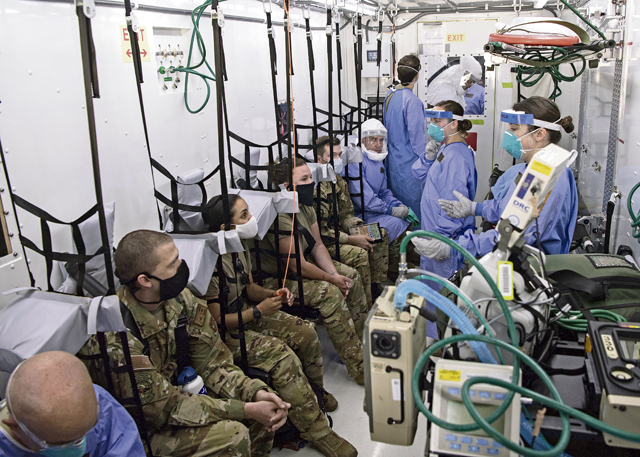
The Negatively Pressurized CONEX, or NPC, is the newest system available to transport large numbers of individuals with COVID-19. Building on the concepts of its predecessor, the Transportation Isolation System, the NPC has increased patient capacity and is more operationally versatile.
On July 14, members of Air Mobility Command came to Ramstein Air Base to teach local medical instructors proper procedures for a number of situations that could happen in a Negatively Pressured Conex.
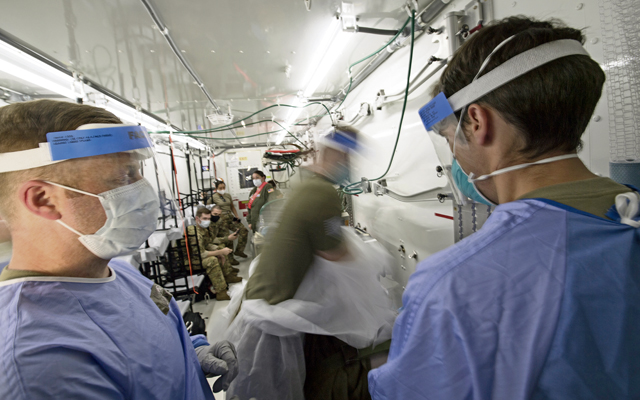
“We have a large group of individuals coming together from the 86th Medical Group and the 86th Aeromedical Evacuation Squadron to form a COVID-19 team,” said Capt. JD Pilger, 86th AES interim training flight commander. “We’re training the trainers to implement the USAFE [United States Air Forces in Europe] COVID-19 movement for EUCOM [European Command] and AFRICOM [African Command].”
NPCs are containment units designed to allow in-flight medical care for patients with diseases like COVID-19 while minimizing the possible spread of infectious diseases to medical personnel and aircrew on board.
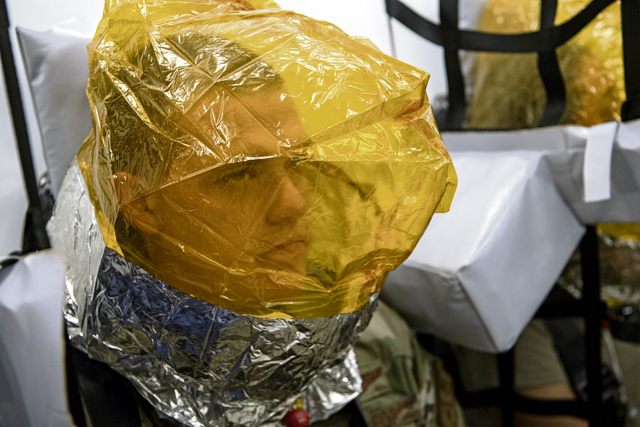
While there hasn’t been a large demand for NPC teams within Europe, military medics know it’s best to be prepared.
“There’s not a huge demand within EUCOM currently, but we’re training, getting ready so if there is a demand we’re ready to go,” Pilger said. “There’s not going to be any delay, we’ll be able to start moving patients day one.”
Building up and preparing these teams is important because COVID-19 isn’t the only global pandemic that they may be called on to combat.
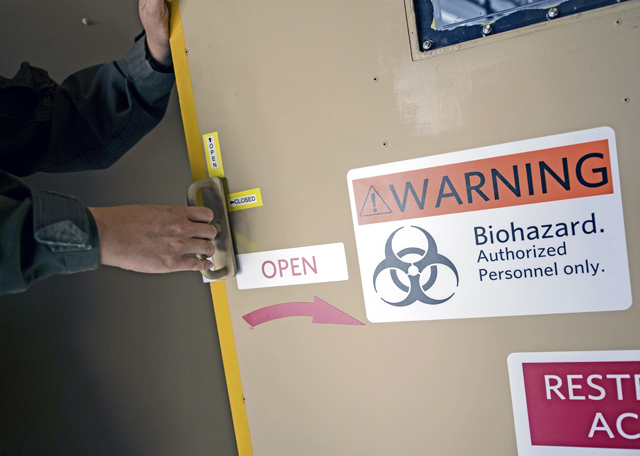
“Going forward we can use these units for potential outbreaks like Ebola and Middle Eastern Respiratory Syndrome, which have a higher mortality rate,” Pilger said. “It’s important to maintain our NPC protocols for anything else in the future.”
During this training, the AMC instructors ran the local medics through a gauntlet of real life scenarios.
“We covered around 15 different scenarios today,” Pilger said. “Anywhere from a patient emergency, where they have a cardiac arrest and we’re having to perform lifesaving maneuvers to bring them back or a personal protective equipment breach and we have to decontaminate ourselves so we don’t get infected.”
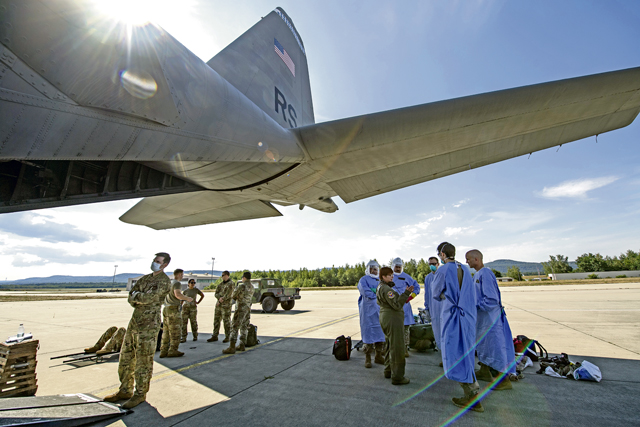
Fighting COVID-19 requires all hands on deck, which means it’s important for medics from different units to be able to work as a single team.
“We had a great job with everyone coming together,” Pilger said. “We’ve come together communicating and coordinating, we’ll be ready to start taking live patients if the demand is there.”


